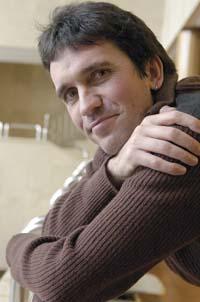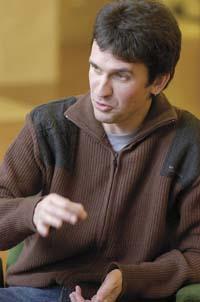Iñaki Inza: "It is a great challenge to give visibility and mobility to machines"

The concept of artificial intelligence was created in 1956 by several American "lovers". And his goal and mirror was man. However, both they and us, who are currently working on artificial intelligence, have realized the difficulties of transferring this measure of human intelligence to the machines. We have seen that the challenge is enormous.
However, how many years are there in the history of humanity? Nothing. Who knows what we will still see and what future generations will see.
Artificial intelligence can be defined in two ways. It would be the first to attempt to transfer intelligence and human capacities to machines, computers, robots, etc. However, there is another branch of artificial intelligence, of importance and actuality comparable to the previous one. Sometimes mathematics is not able to solve many of the problems we have in data analysis. Why? We may not be able to write equations, formally define the problem, or make derivatives. In order to solve such problems, artificial intelligence has proposed to observe how it solves nature in its environment. And from that inspiration he proposes different techniques. There is a magic word in artificial intelligence to express it: heuristic. That is, artificial intelligence proposes several heuristics to somehow solve these problems in an elegant and effective way.
There are many others. A well-known technique is the genetic algorithms that are inspired by Darwin's theory of evolution. The best solutions and those that best adapt to our environment last and the worst solutions are discarding, eliminating and killing.
And another example is the name of ant colony, the colonies of ants. As its name indicates, it is inspired by the colonies of ants: in the analysis of data problems are solved that otherwise we cannot solve.
Some advances are well known. For example, IBM's Deep Blue computer, which won master Kasparov in chess. That's ancient history, long ago you hear nothing about the Deep Blue, but in its day it had a great repercussion.

Another example, perhaps the biggest example in terms of robotics and mobility, according to what I know, is a robot from the company Honda: Asimo. Its mobility capacity is spectacular, it is really skillful. On Youtube you can see several videos. And you can also find videos that, walking through the cushion, you see fall down the stairs of Asimo. Thousands of euros to the fret!
For example, the challenge is to give our vision to machines, our vision capacity. However, there have been great advances. The other day I saw in an ad that there are cars that recognize the speed limit at every moment of the road. It is surprising the effort they would have to make to achieve it, and how easy we do with our eyes.
Still this gap or margin is huge. And it is a huge challenge to transfer these visual and mobility capabilities to machines and computers.
Driving the car automatically is a challenge. And in that study, large amounts of money are being put in.
There are races in which cars are automatically driven, but in case, to avoid misfortune, they are done in the Arizona desert and not in the city.
For example, there is a very prestigious congress, the Robocup, in which on the basis of something that can be a simple rarity for the human being, they try to apply the advances made in the matter of mobility. For example, they perform football competitions between two teams of robots. What seems like a nonsense is a great challenge, and is a bench of essays to test the advances that are achieved in mobility.
On the other hand, other challenges of artificial intelligence are found in the field of data analysis, trying to solve the problems that we have humans. What is very fashionable today is bioinformatics to combat unregulated genes, proteins and metabolites that are found after human diseases.

And artificial intelligence in meteorology is also applied to propose weather models and make weather predictions; it is also applied in aircraft and car design; to make antivirus and separate spam or garbage in email. It is also having much to say in stock and financial forecasts. Several companies also use it to send personalized propaganda. Etc.
We work with people with different knowledge: biologists, doctors, chemists... and it is the obligation of computer scientists to propose artificial intelligence techniques for data analysis.
Around the world a lot of money and effort is being invested to know which genes, proteins, and metabolites are deregulated or crazy behind each disease. The example of cancer is there, of course.
Well, to simplify, the normal thing is that biologists and doctors, on the one hand, get cases of patients with a screening and on the other, do the same with those who do not. There are techniques capable of giving numerical value to the proteins and genes of the cells to perform screening, and these numerical values are compared by artificial intelligence programs to see which genes and proteins have specifically expressed patients. It is, in short, a numerical game.
Yes. In fact, the biologist or doctor has thousands and thousands of suspicious genes. He cannot investigate all separately. Artificial intelligence makes it easier for you to work and highlights the proteins, metabolites and genes that can be part of the disease. At this level, much progress has been made, in some way artificial intelligence directs the work of these doctors and biologists.
Buletina
Bidali zure helbide elektronikoa eta jaso asteroko buletina zure sarrera-ontzian











